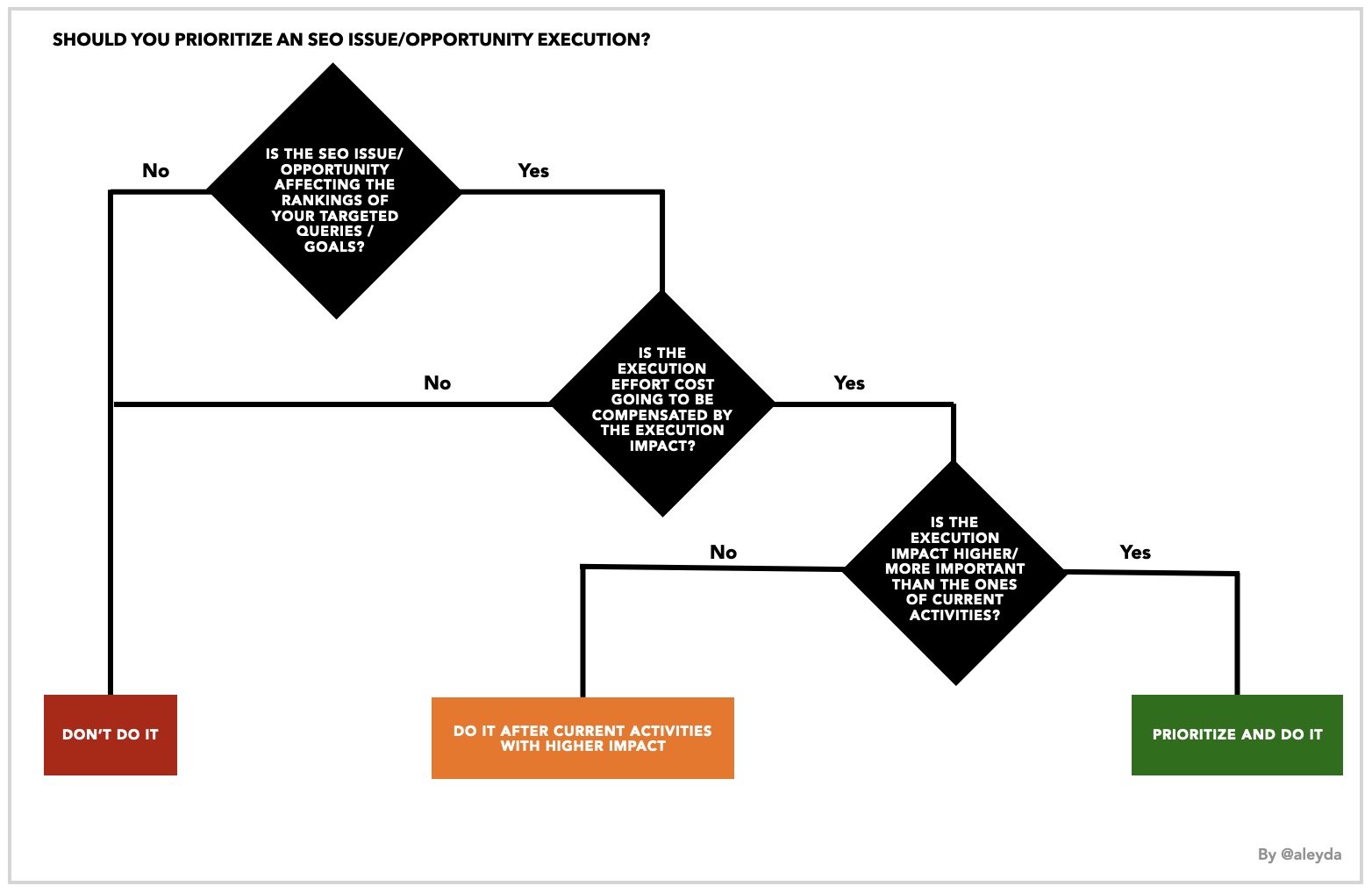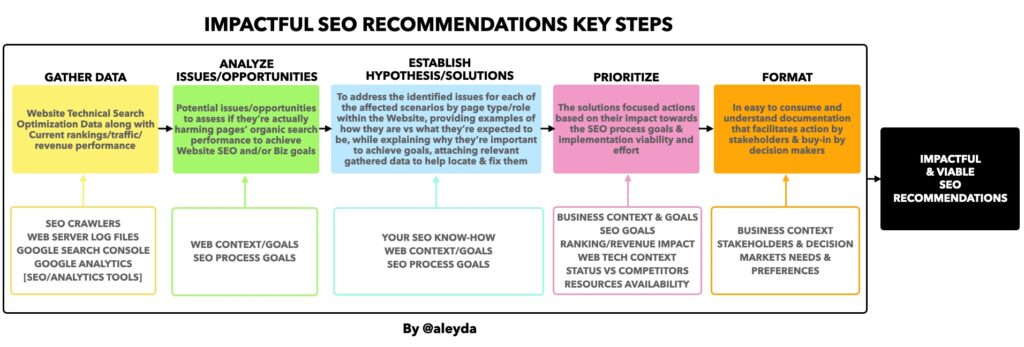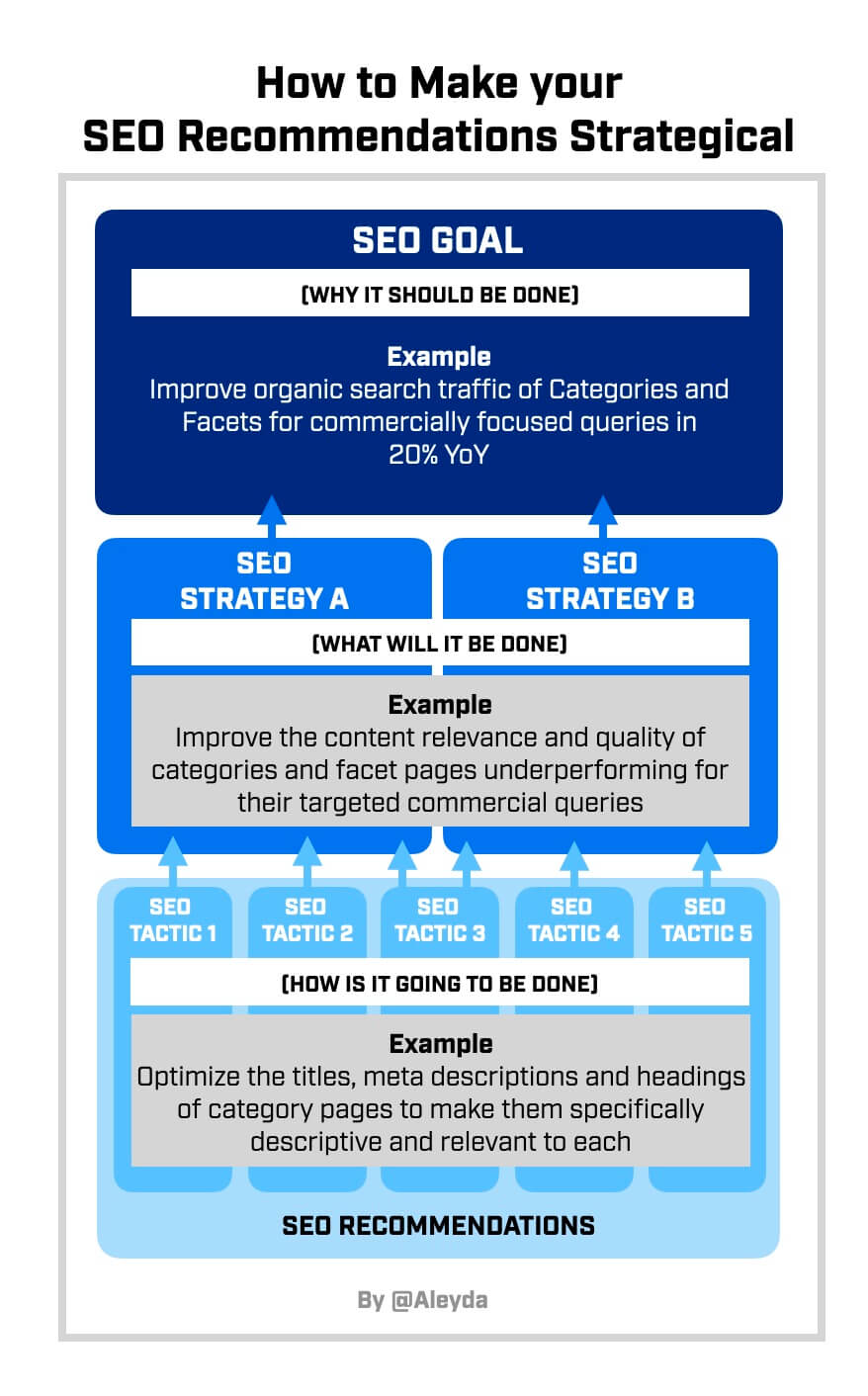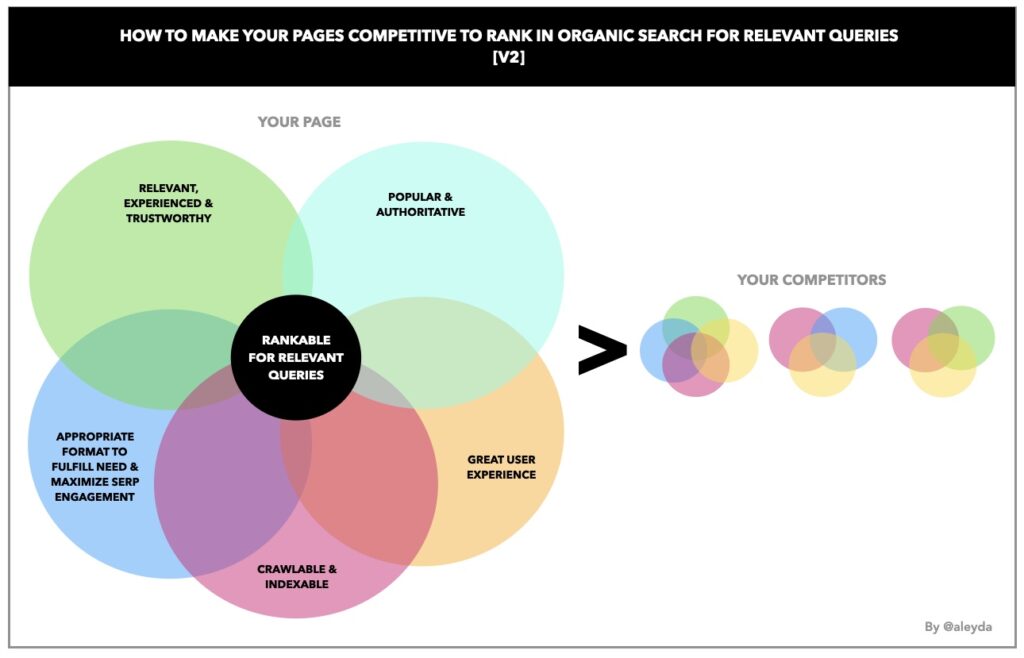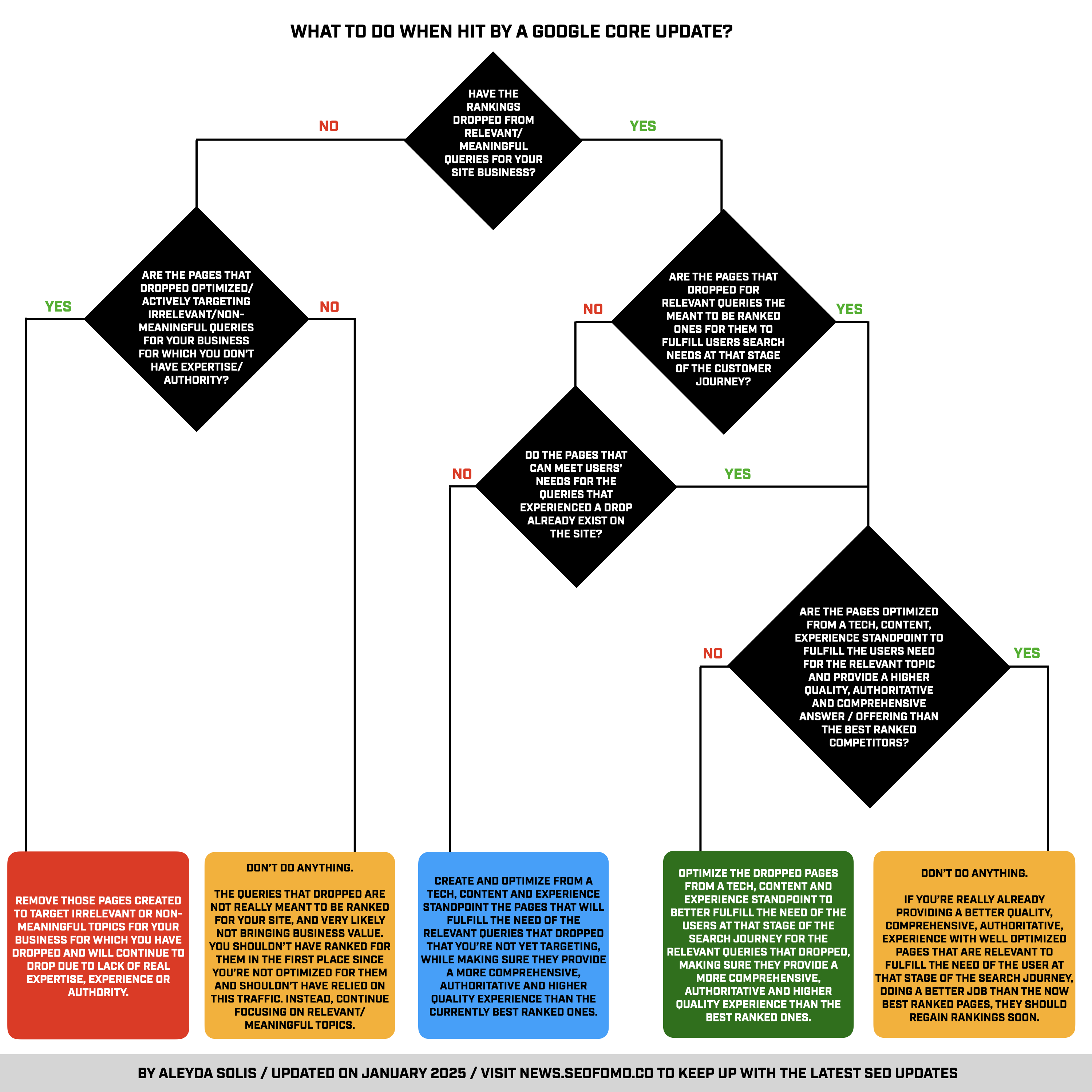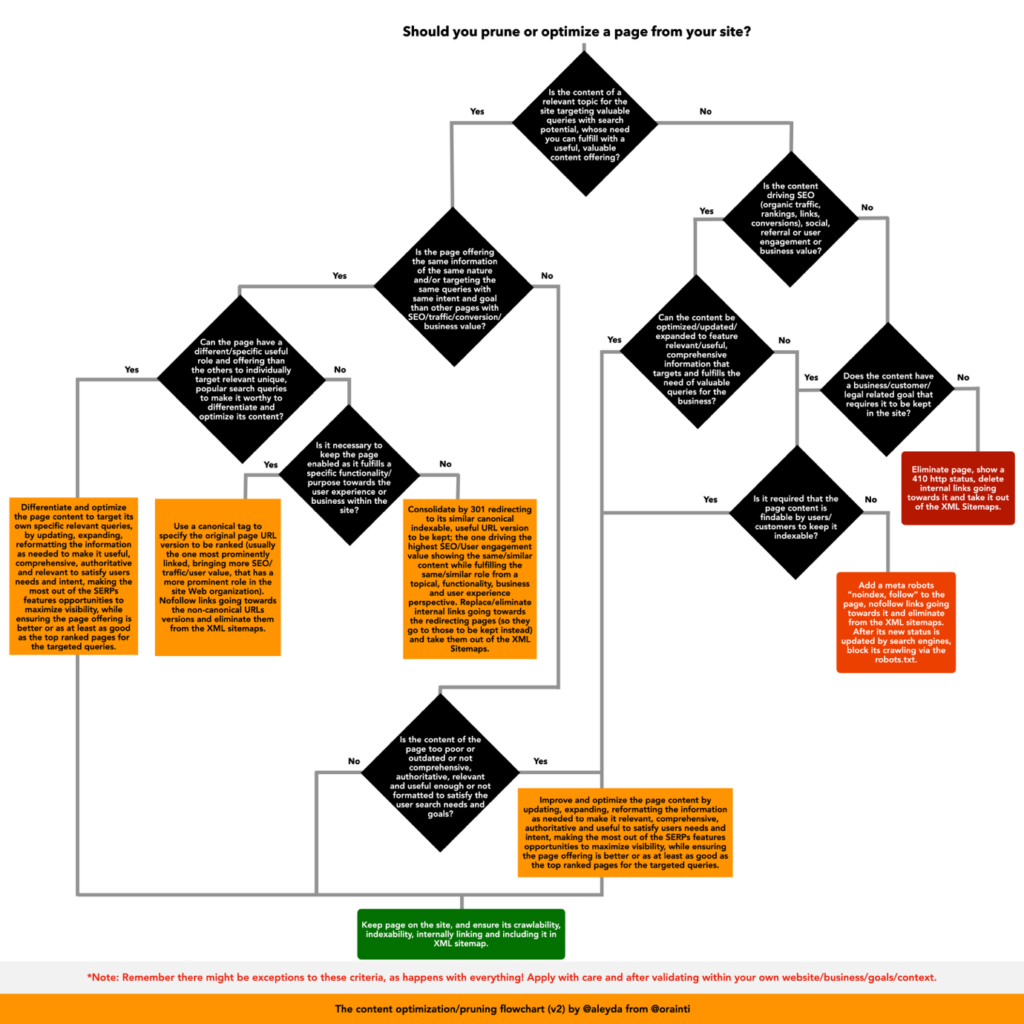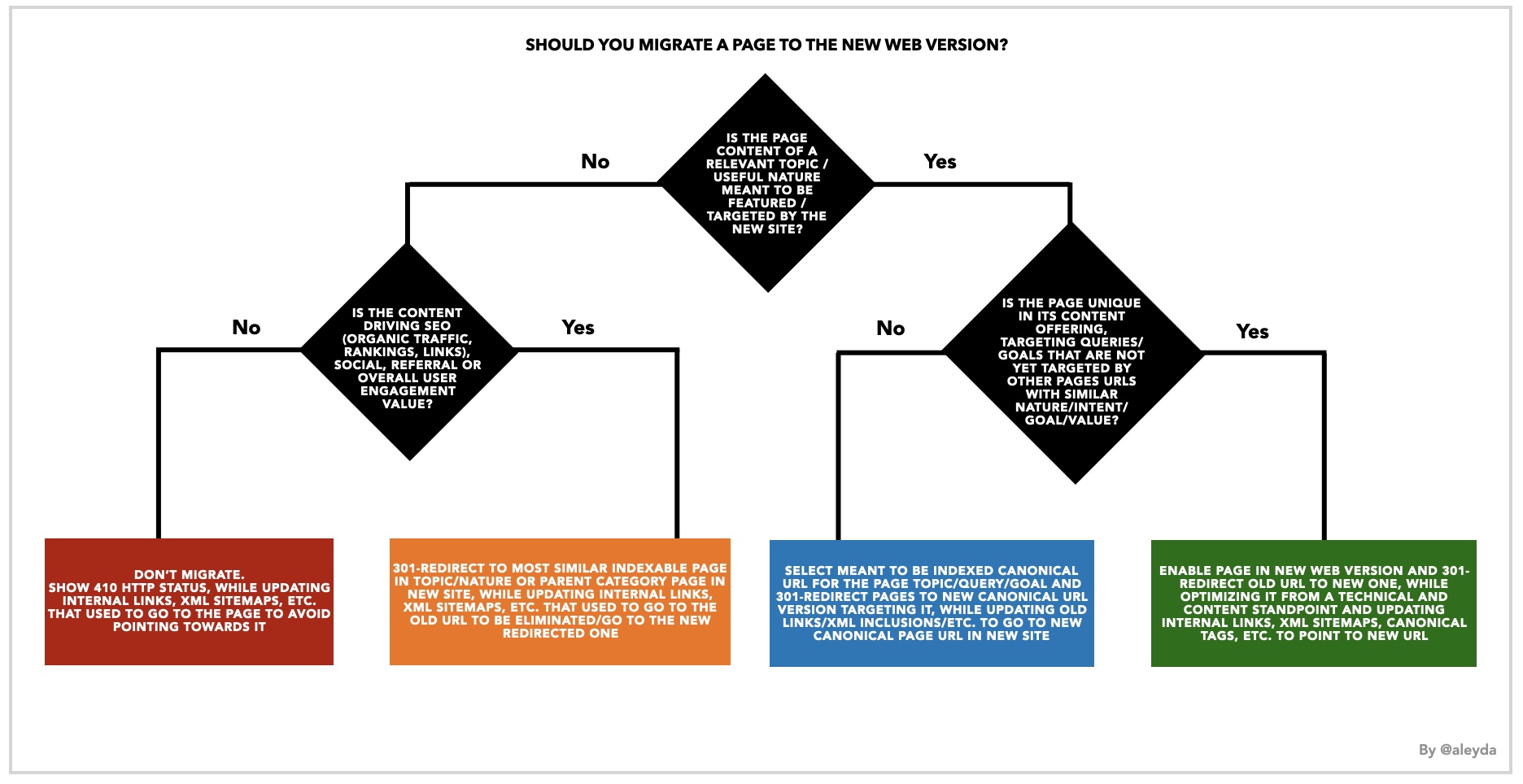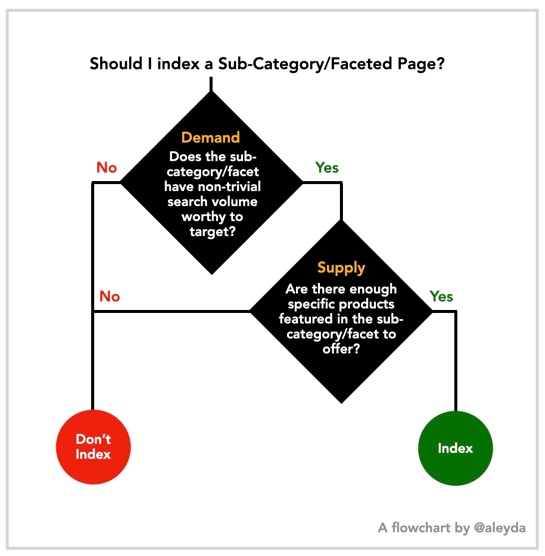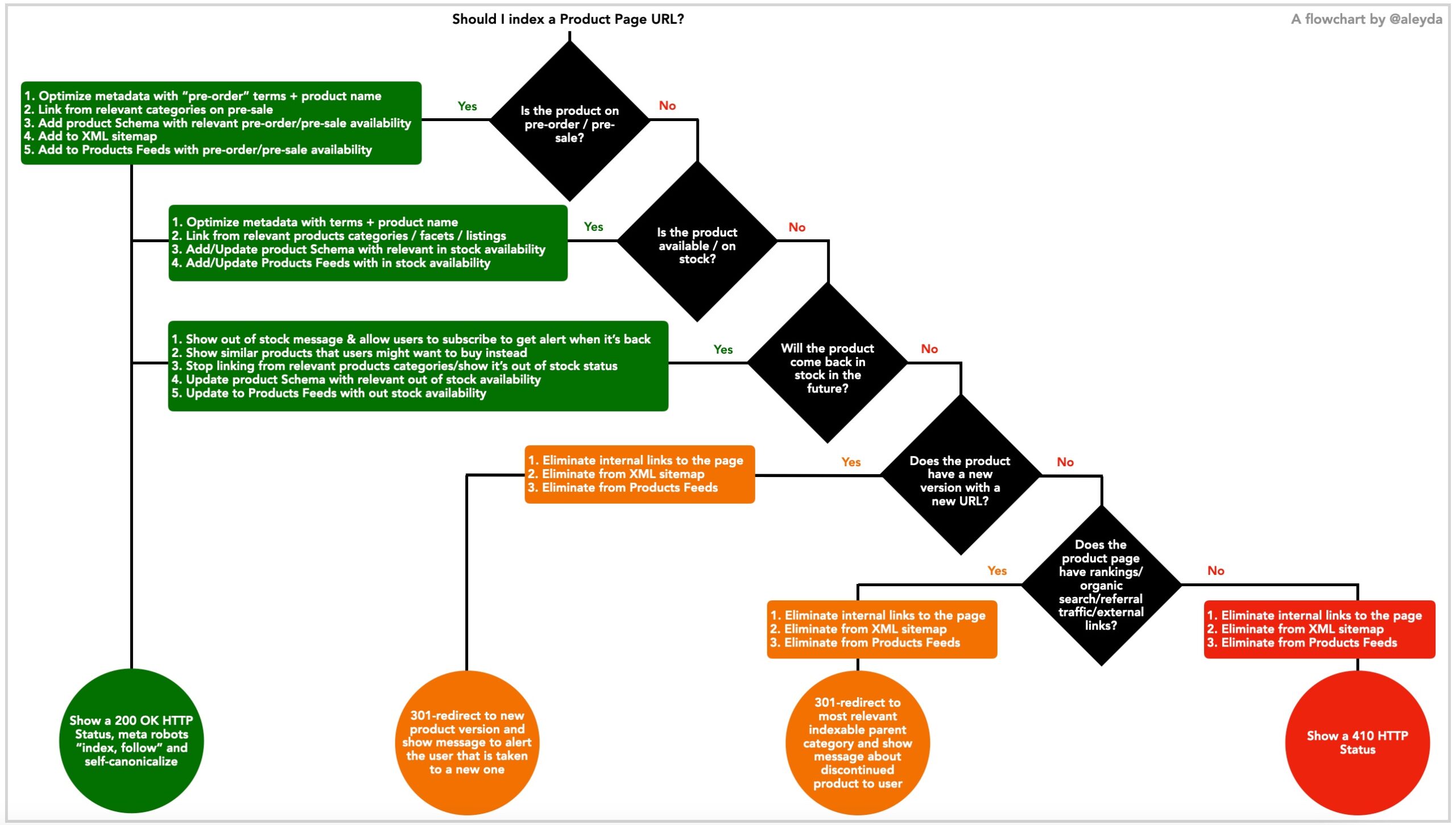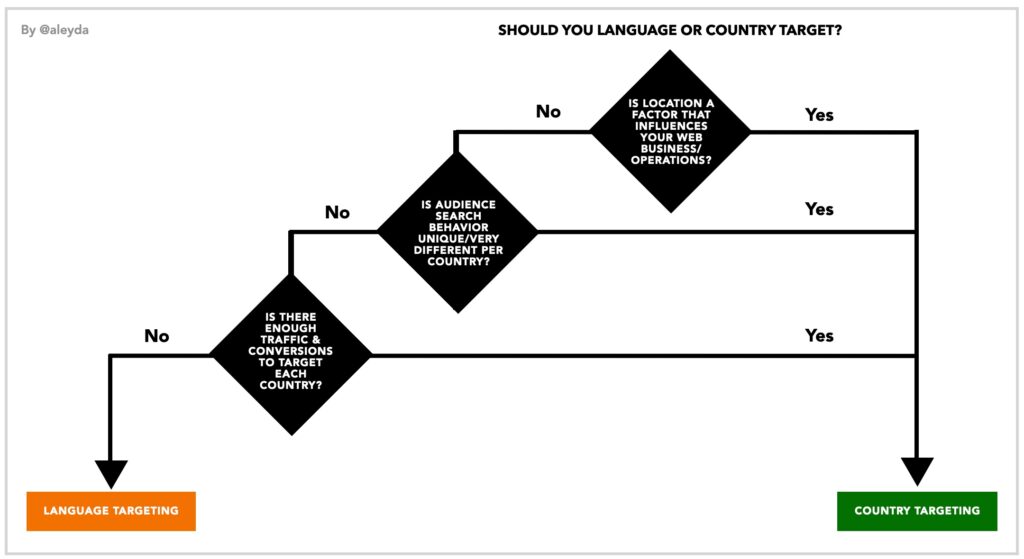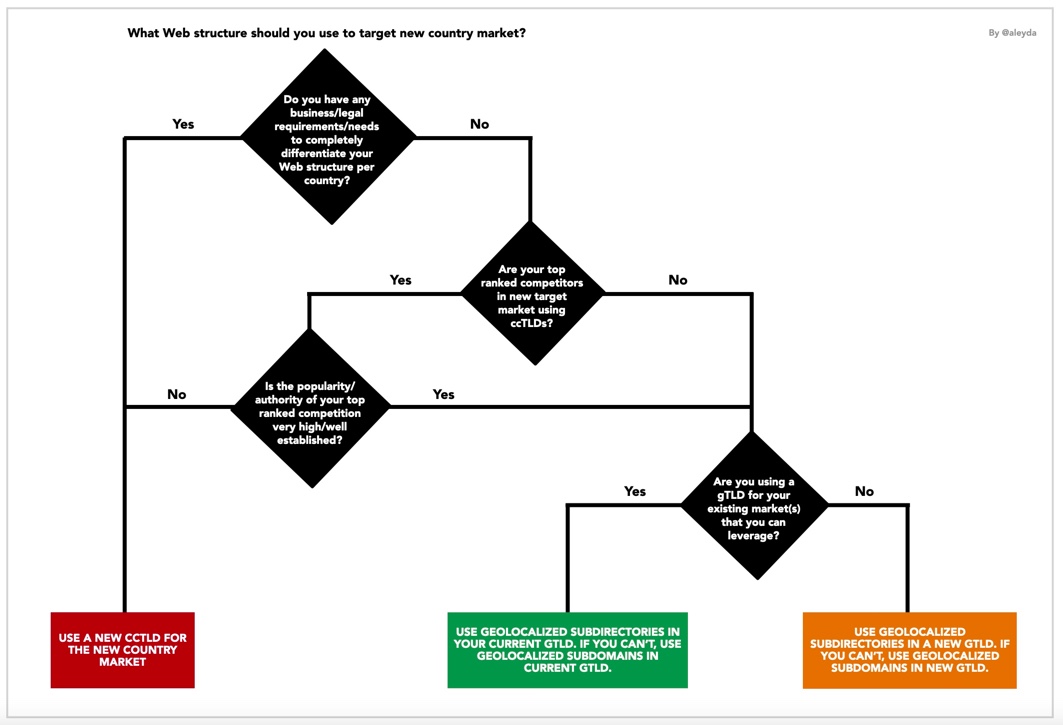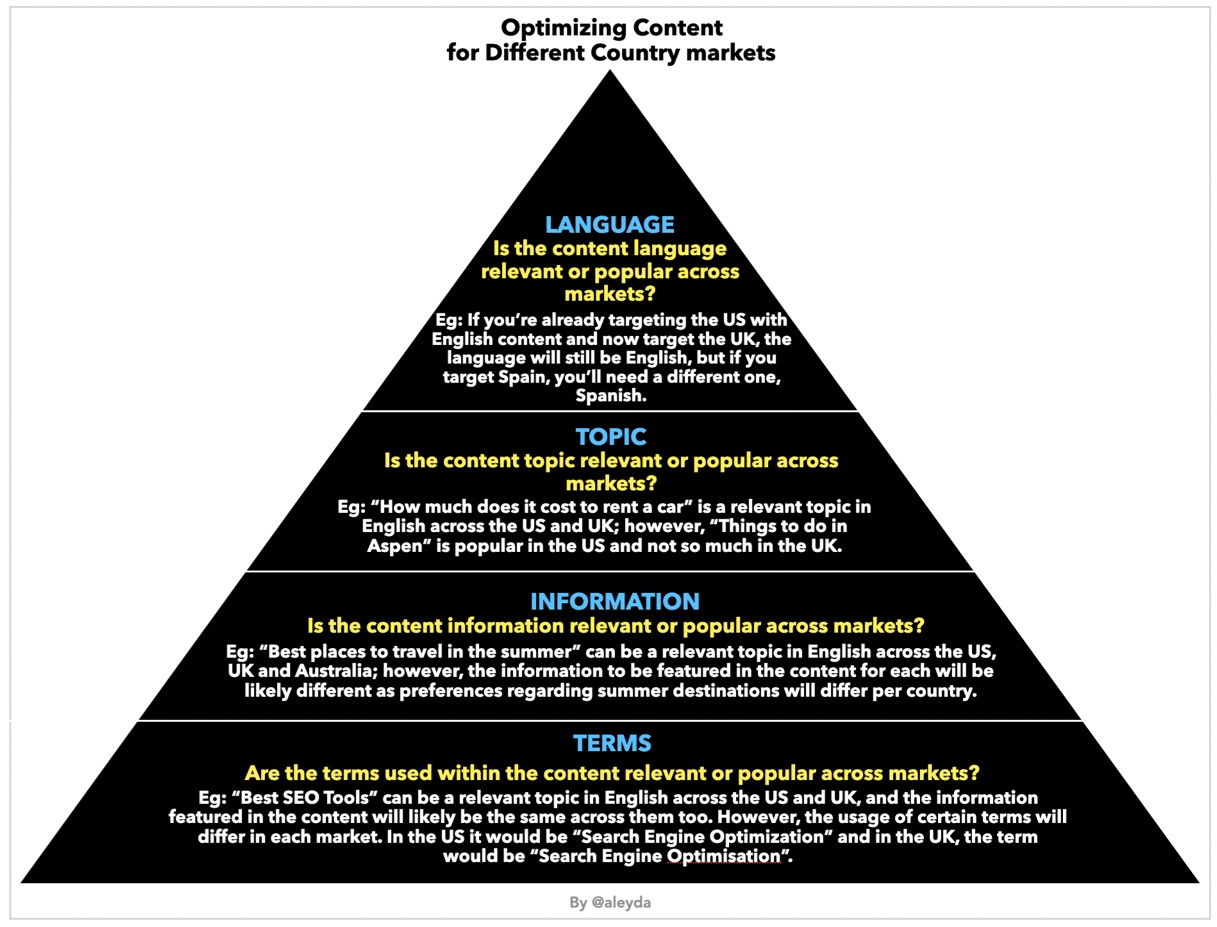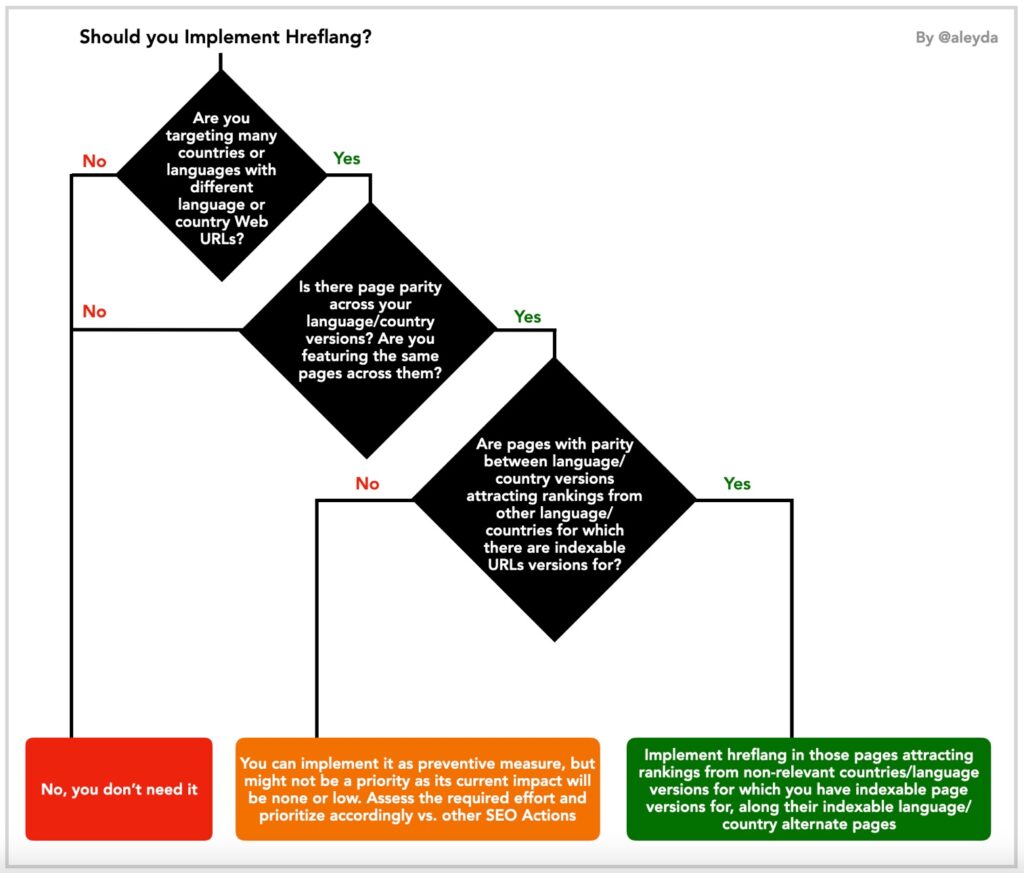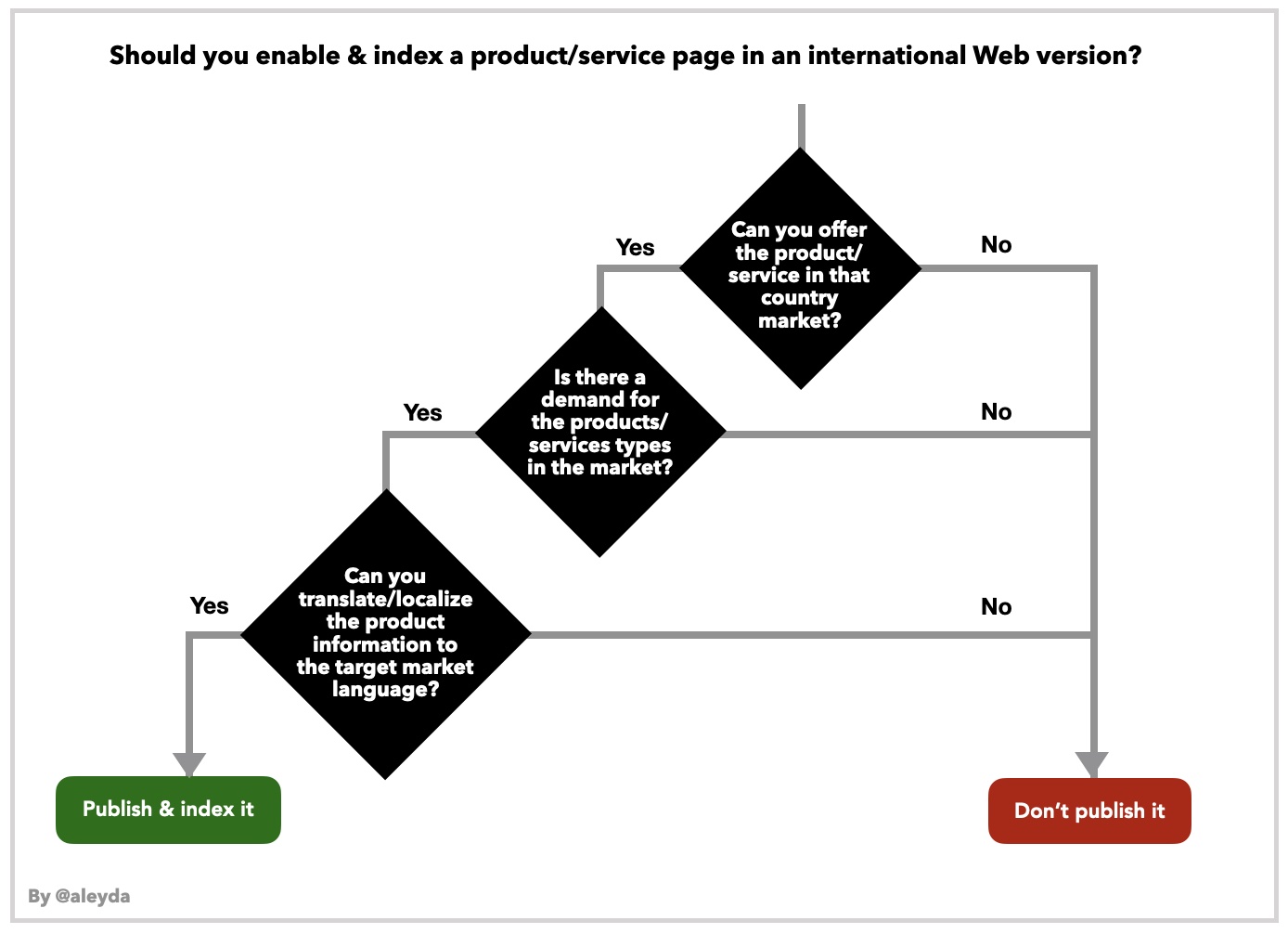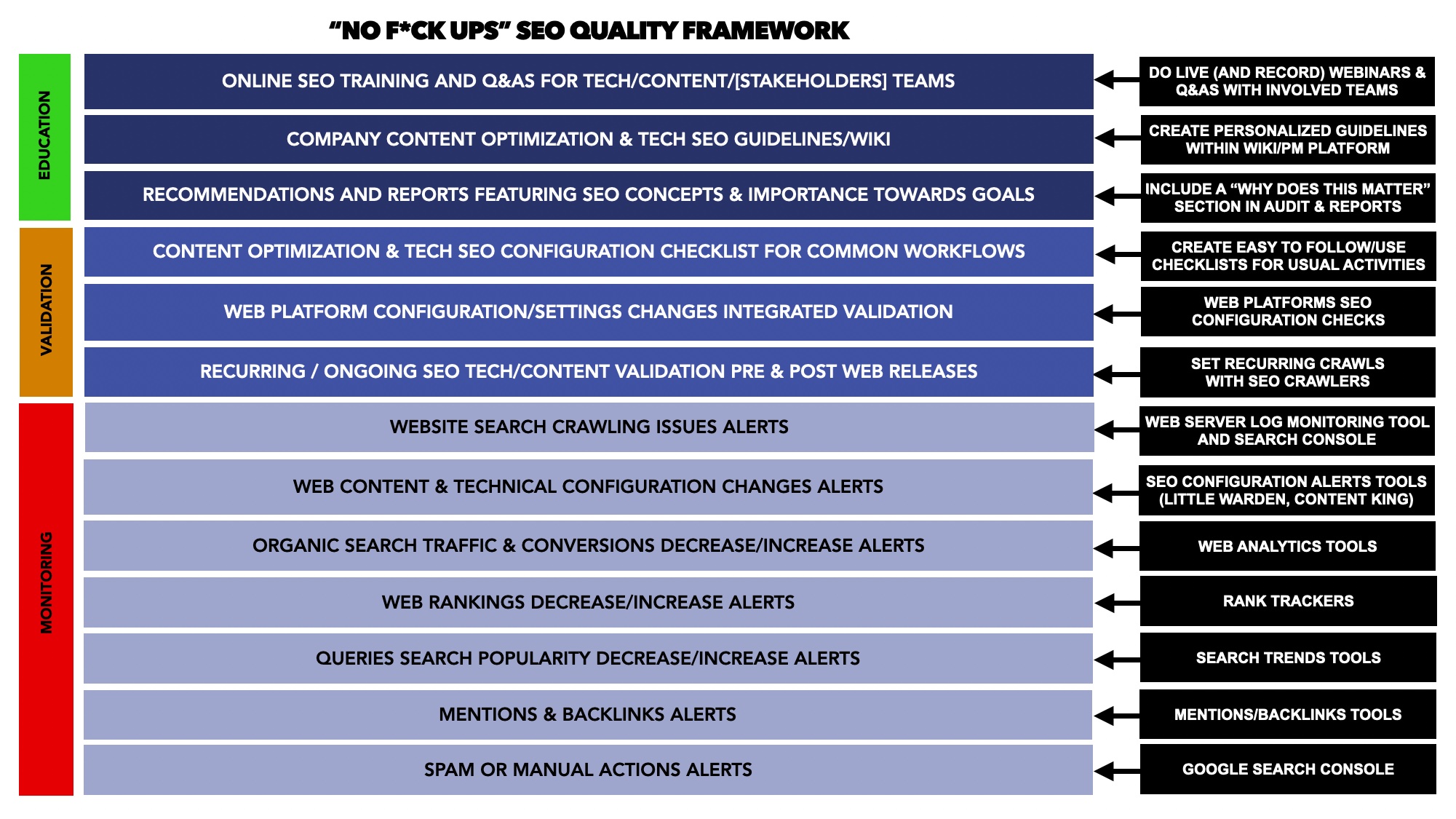I’m a fan of creating and using charts in general and flowcharts in specific to easily refer and guide through decision making during the SEO Process (and avoid just saying “it depends) with clients, as they’re also easier to understand by non-SEOs, show the criteria behind decisions and allow to automate many of the scenarios.
Here’s an aggregation of my top ones, that I hope to expand from time to time:
- SEO Area Importance vs Website Size
- SEO Execution vs Company Size
- The Pyramid of SEO Needs: What’s needed for SEO Success?
- Should you prioritize an SEO Opportunity/Issue Execution?
- Impactful SEO Recommendations Key Steps
- How to Make your SEO recommendations Strategical
- How to Make your Pages Competitive to Rank for Relevant Queries?
- What to do when hit by a Google Core Update?
- Should you prune or optimize a page from your site?
- Should you migrate a Page to the New Web Version?
- Should I index a Sub-Category/Faceted Page?
- Should I Index a Product Page URL?
- Should you language or country target?
- What Web structure should you use to target a New Country Market?
- What should you take into consideration when Optimizing Content for Different Country markets?
- Should You Implement Hreflang?
- Should you enable and index a product/service page in an international Web version?
- No SEO F*ck Ups, SEO Quality Frameworks
Let’s go through them! If you want to save them, just click on them to download them.
1. SEO Area Importance vs Website Size
The importance of the different areas that play a role in SEO tend to change given the size of the site. Content and backlinks tend to play a bigger role in smaller sites. Technical SEO tends to have a higher importance in bigger sites.
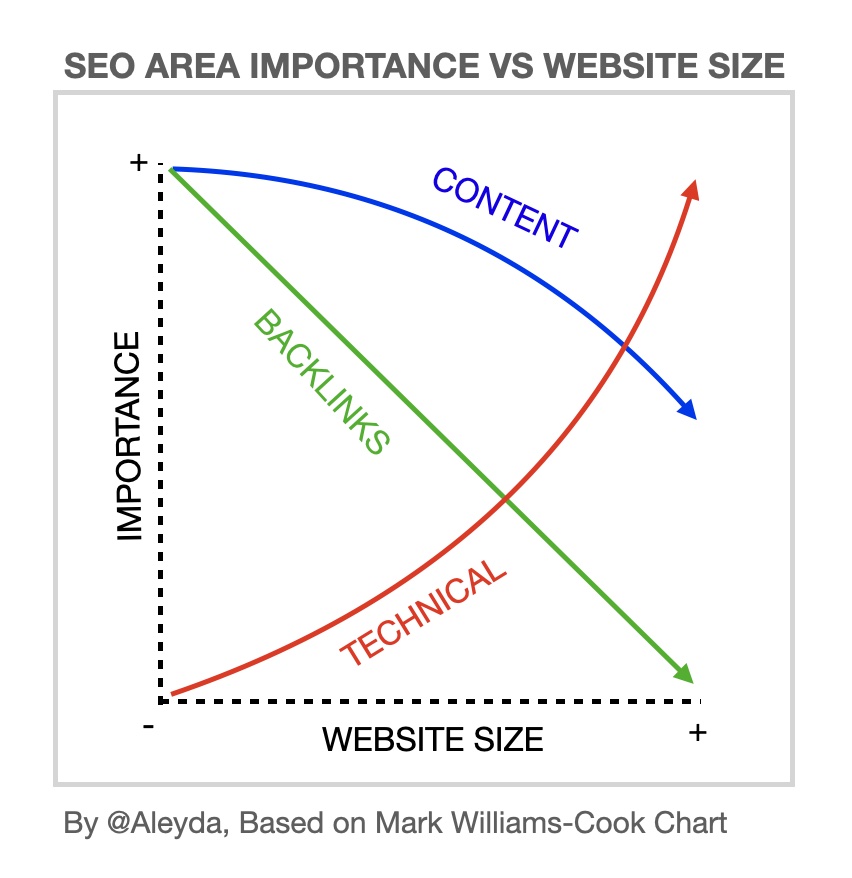
2. SEO Execution vs Company Size
SEO execution challenges tend to shift depending on the company size: smaller companies tend to have higher flexibility but fewer resources. Bigger companies tend to have more resources but less flexibility. It’s then important to focus your SEO efforts accordingly.
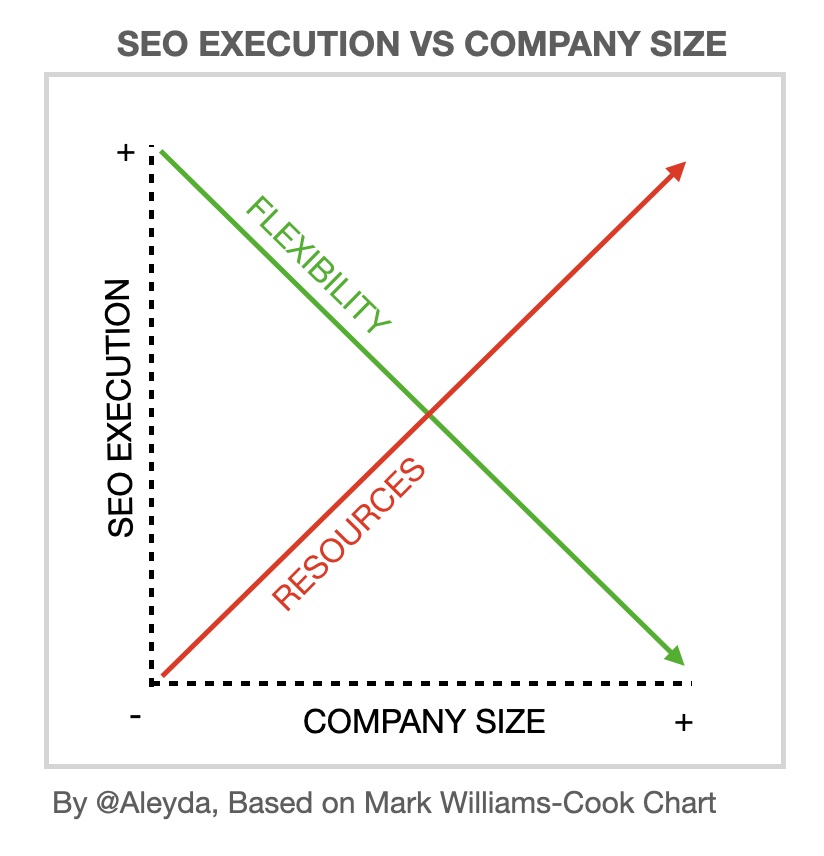
3. The Pyramid of SEO Needs: What’s needed for Success
The challenge faced by many SEO processes is that they’re stuck at the fix and improve stage due to continuous SEO-related bugs and lack of resources, and they need to move to the build stage to grow as expected.
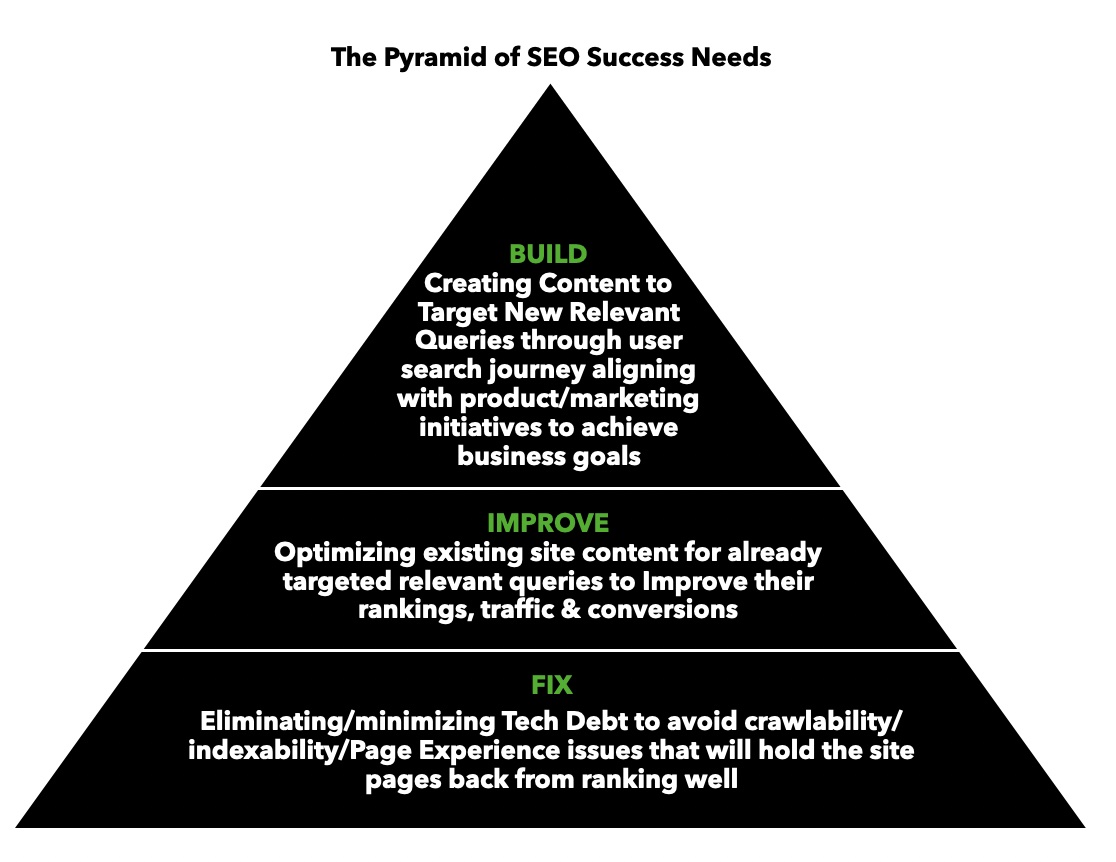
4. Should you Prioritize an SEO Opportunity/Issue Execution?
There will be always room to optimize things for search, so how do you prioritize what to focus on? Use this flowchart.
5. Impactful SEO recommendations Key Steps
Follow these steps to develop SEO recommendations that drive growth:
6. How to make your SEO Recommendations Strategical
Your SEO recommendations likely describe the tactics that you should execute to solve an issue or leverage an opportunity to execute a strategy that should allow to achieve an SEO goal. Here’s an easy way to visualize it to ensure your SEO recommendations are aligned to a meaningful strategy and goal:
7. How to Make your Pages Competitive to Rank for Relevant Queries
It’s about building a page that’s better at fulfilling the user search need for its targeted queries, with content that is:
- Crawlable and indexable
- More relevant, experienced and trustworthy than the one of competitors
- More popular and authoritative than the one of competitors
- Provides a superior user experience than the one of competitors
- Shown in the appropriate format to fulfill users search needs and maximize SERP visibility and engagement
8. What to do when hit by a Google Core Update
Whenever you’re hit by a Google Search Core Update it’s normal to get nervous, but take a look at this flowchart to decide if you should actually do anything.
9. Should you prune or optimize a page from your site?
Many times, less is more, and removing old, non-relevant content will help. However, it’s critical to apply certain criteria to decide if it’s reasonable to remove the content or not, and how to do it to avoid harm.
10. Should you migrate a Page to the New Web Version?
To avoid organic search traffic (and a bad user experience) the best is to not leave anything out when doing a Web migration, however, sometimes you need to prioritize because of many reasons. Check out how below.
11. Should I index a Sub-Category/Faceted Page?
Whenever you ask an SEO about indexing sub-categories/facets in e-commerce sites, they’ll say “it depends”. In most cases, it will depend on the supply and demand. Check out this flow chart to see how and decide:
12. Should I Index a Product Page URL?
Actions to take with your product pages optimization aligned to your e-commerce inventory changes.
13. Should you language or country target?
When deciding to target international markets, many times you wonder if you should target countries or languages. Use this flowchart to decide.
14. What Web structure should you use to target a New Country Market?
Sometimes it’s better to use geolocated subdirectories in gTLDs for a new country market. In others, it’s more beneficial to use ccTLDs. Learn how to decide below.
15. What should you take into consideration when Optimizing Content for Different Country markets?
It’s fundamental to assess if the language, topic, information, and terms are still relevant or need to be localized to connect with each country market needs.
16. Should You Implement Hreflang?
Hreflang it’s actually not always required in international SEO processes. Check out when it’s actually needed below.
17. Should you enable and index a product/service page in an international Web version?
Many times you wonder if it makes sense to enable and index a product/service page in a new country/language market. Use this flowchart for decision making.
18. No SEO F*ck Ups, SEO Quality Framework
Avoid common SEO mistakes and bugs by implementing an SEO quality framework, with education, validation and monitoring actions:
Remember, these should be used as references not to replace your SEO decision making taking into consideration your particular context, there are no absolutes in SEO, so in certain scenarios, these might not be applicable or the best alternatives!
If you want to keep updated with resources like this, subscribe to SEOFOMO, my weekly SEO newsletter, with the top SEO news and resources.
